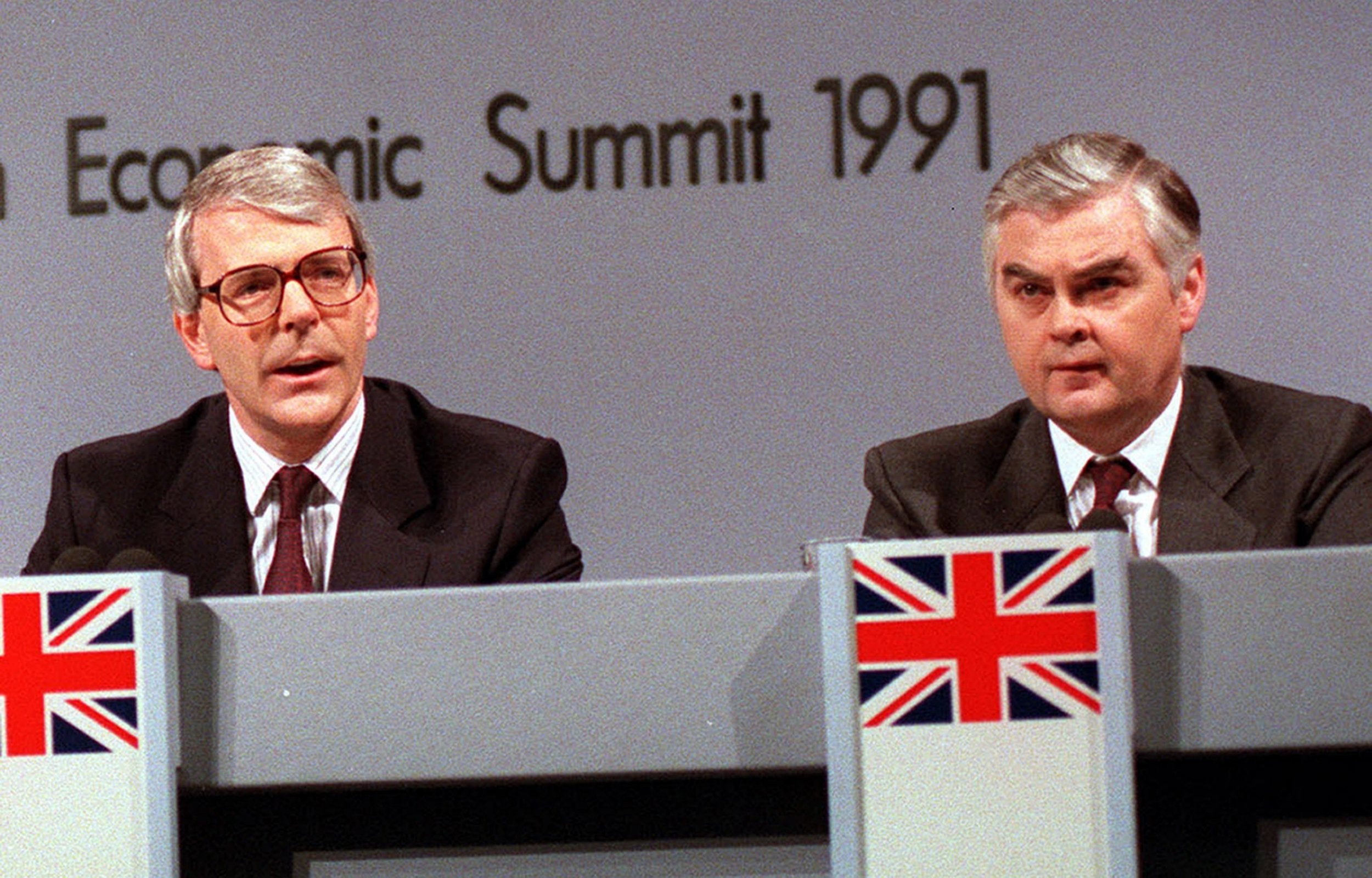How John Major and Norman Lamont hid the cost of the Black Wednesday disaster
Chancellor was “increasingly anxious” about the way the much-depleted reserves were being hidden from the public

Newly released documents have revealed the lengths to which John Major’s government went to disguise the Bank of England’s attempts to prop up the pound before the Black Wednesday disaster in 1992.
Sterling crashed out of the Exchange Rate Mechanism (ERM) in dramatic fashion on 16 September 1992 after the government’s failed attempts to boost the currency’s value.
Under the ERM, the government had been committed to keeping the pound within a range of values against Germany’s deutschmark.
But on Black Wednesday interest rates rose from 10 per cent to 12 per cent and then 15 per cent, in a bid to tempt speculators to buy the pound, thereby boosting its value. The move failed spectacularly, ruining the Conservatives' claim to be the party of economic competence.
In the preceding months, the Bank of England, which was not independent from government at the time, sold almost $40bn (£30bn) in foreign currency as speculators - most famously George Soros - made big bets that sterling would be devalued.
Official figures at the time showed that reserves had only dwindled by £2bn. Overall, the cost of the operation was estimated at £3.3bn.
Mr Soros made £1bn from his position, earning him the nickname "The man who broke the Bank of England".
Amid sustained public pressure, then Chancellor Norman (now Lord) Lamont, refused to say how much of the UK’s foreign currency reserves had been used to boost the pound’s price.
But papers published by the National Archives show that he was “increasingly anxious” about the way the much-depleted reserves were being hidden from the public.
On 26 November 1992, Mr Lamont's private secretary Jeremy Heywood, who is now the Cabinet secretary, explained the government had been able to disguise the state of the reserves, in part through the creation of what was described as a “secret negative forward book”. This allowed it to re-acquire foreign exchange through “forward swaps” worth around $12.5bn.
“In principle the forward book could be run down either by public borrowing or lower gross reserves; but having consciously disguised this part of the September's operations it would now be very difficult to explain the real reason why we were now undertaking further borrowing or revealing lower gross reserves,” Mr Heywood wrote.
“That points to non-publicised 'creaming off' as the only acceptable approach - it is also the only way the net reserve position can be improved.”
The letter notes that the Bank was “very cautious” about the tactic fearing it could lead to further falls in the pound, fuelling inflation.
In an accompanying memo, Mary Francis in the No 10 private office notes: “He [Mr Lamont] is increasingly anxious about the way it is being used to conceal the actual state of the reserves.”
News agencies contributed to this report
Subscribe to Independent Premium to bookmark this article
Want to bookmark your favourite articles and stories to read or reference later? Start your Independent Premium subscription today.

Join our commenting forum
Join thought-provoking conversations, follow other Independent readers and see their replies